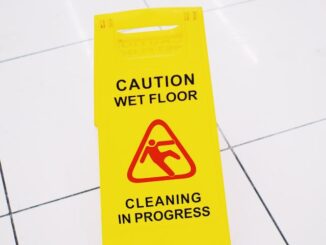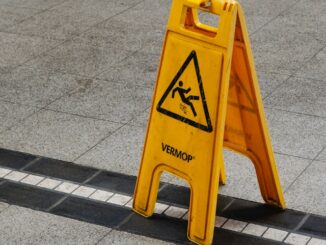
A slip and fall accident in Ontario can be a disorienting experience, leaving you with physical pain and legal questions. Communicating effectively with the property owner becomes crucial in establishing your claim and potentially securing compensation for your injuries. This article dives into the nuances of communication after a slip and fall, emphasizing the importance of time limits and offering strategies for a productive dialogue.
The Importance of Clear Communication
Following a slip and fall accident, the initial shock might make clear communication difficult. However, establishing a paper trail is essential. Contacting the property owner promptly serves several purposes:
- Preserves Your Rights: Prompt communication informs the property owner of your intention to pursue a potential claim. This helps establish a timeline of events.
- Gathers Evidence: The property owner might take steps to address the hazard after the accident. Early notification increases the possibility of preserving the scene as evidence.
- Opens the Door for Resolution: Direct communication can sometimes lead to an amicable resolution, especially for minor accidents.
Time Limits: A Crucial Factor
The time limit for notifying a property owner of a slip and fall accident in Ontario varies depending on the type of property:
- Private Property (60 Days): For accidents due to a lack of winter maintenance on private property, including residences, businesses, and shopping malls, there a 60-day window to notify the property owner and/or snow removal contractor in writing of your intention to claim. This is crucial, as failing to meet the deadline could prevent you from litigating your case.
- Municipal Property (10 Days): For accidents on municipal property like sidewalks, walkways, or public parks, you have a stricter time limit of 10 days to notify the municipality according to the Municipal Act. This shorter window necessitates swift action.
Crafting an Effective Notice
This list is not exhaustive, but some key elements should be present:
- Date of Accident: Clearly state the date and approximate time of the slip and fall.
- Location of Accident: Specify the exact location of the accident on the property.
- Description of the Hazard: Describe the cause of your fall, be as detailed as possible about the hazard responsible for the slip (e.g., spilled liquid, wet floor, uneven pavement).
- Extent of Injuries: Briefly describe the injuries you sustained.
- Contact Information: Include your contact details (phone number, email address).
- Signature: Sign and date the notification.
- Delivery of written notice with proof/signature: Keep a copy of your letter as well.
Beyond the Notice: Maintaining Communication
While the initial notification is crucial, further communication with the property owner might be necessary. Here are some additional tips for maintaining a productive dialogue:
- Keep Communication in Writing: Maintain a paper trail by keeping copies of all written communication with the property owner.
- Be Clear and Concise: Avoid emotional language and focus on providing factual information.
- Avoid Admissions of Fault: Refrain from making statements that could be misconstrued as accepting blame for the accident.
- Seek Guidance from a Personal Injury Lawyer: A lawyer can advise on the most effective communication strategies and navigate legal complexities on your behalf.
Understanding the Property Owner’s Response
Property owners might respond to your notice in various ways:
- Acknowledgement: They might simply acknowledge receipt of your notice. This doesn’t necessarily signify acceptance of liability.
- Request for Additional Information: They might request further details about the accident and your injuries. Provide the requested information but avoid offering unnecessary specifics.
- Denial of Liability: The property owner might deny responsibility for the accident. This doesn’t necessarily mean your claim is invalid.
- Offer for Settlement: In some cases, the property owner might offer a settlement to avoid a protracted legal battle. Consult a lawyer before accepting any settlement offer.
Moving Forward with Your Claim
If communication with the property owner doesn’t yield a satisfactory outcome, you might need to consider further action. An experienced personal injury lawyer can:
- Review the Details of Your Case: A lawyer can assess the strength of your claim based on the evidence available.
- Gather Additional Evidence: They can help collect witness statements, medical records, and other evidence to support your claim.
- Handle Negotiations with the Property Owner or Insurance Company: They can negotiate with the property owner or their insurance company on your behalf to maximize your compensation.
- Represent You in Court (If Necessary): If necessary, lawyers can represent you in court and advocate for your rights throughout the legal process.
Conclusion
A slip and fall accident can be a challenging experience. Effective communication with the property owner and a clear understanding of time limits are crucial steps towards a successful claim.



